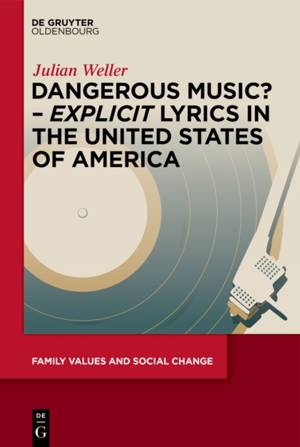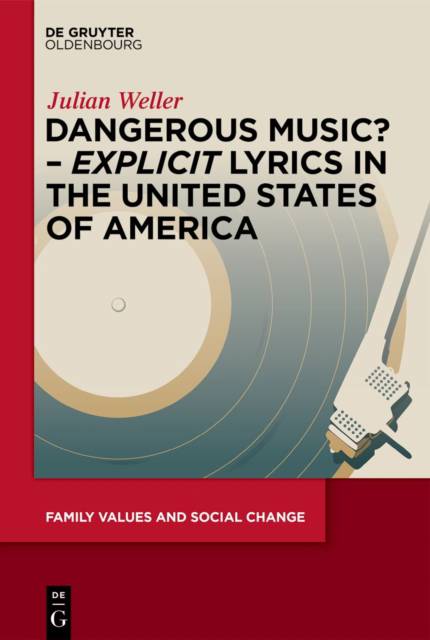
Je cadeautjes zeker op tijd in huis hebben voor de feestdagen? Kom langs in onze winkels en vind het perfecte geschenk!
- Afhalen na 1 uur in een winkel met voorraad
- Gratis thuislevering in België vanaf € 30
- Ruim aanbod met 7 miljoen producten
Je cadeautjes zeker op tijd in huis hebben voor de feestdagen? Kom langs in onze winkels en vind het perfecte geschenk!
- Afhalen na 1 uur in een winkel met voorraad
- Gratis thuislevering in België vanaf € 30
- Ruim aanbod met 7 miljoen producten
Zoeken
Dangerous Music? - 'Explicit' Lyrics in the United States of America
Julian Weller
€ 94,95
+ 189 punten
Omschrijving
This book discusses the history of music warning labels, specifically the Parental Advisory Label (PAL), and the Parents Music Resource Center (PMRC). It aims to answer these questions: How could the PMRC trigger a debate on music lyrics as a negative influence on children that led to the introduction of the PAL in the long run? What did the implementation of the PAL warning mean for musicians and how had the perception of music changed so that the advisory label was deemed necessary? The central thesis is that through the discourse on explicit lyrics, certain music was marked as an actual threat to children and society and consequently started to be perceived as such. By the way in which the discourse evolved, and how other actors conducted themselves in the debates, this understanding of certain music was repeatedly (re-)negotiated and connected to other current discourses, such as discourses on family values, sexuality, youth culture, generational conflicts and social problems. Through this, the understanding of certain music as a threat to children and society was constantly renewed.
The book analyses the PMRC's campaign on explicit lyrics and provides insights into their strategy and success from a historical perspective.
The book analyses the PMRC's campaign on explicit lyrics and provides insights into their strategy and success from a historical perspective.
Specificaties
Betrokkenen
- Auteur(s):
- Uitgeverij:
Inhoud
- Aantal bladzijden:
- 342
- Taal:
- Engels
- Reeks:
- Reeksnummer:
- nr. 8
Eigenschappen
- Productcode (EAN):
- 9783111328805
- Verschijningsdatum:
- 22/07/2024
- Uitvoering:
- Hardcover
- Formaat:
- Genaaid
- Afmetingen:
- 156 mm x 234 mm
- Gewicht:
- 707 g

Alleen bij Standaard Boekhandel
+ 189 punten op je klantenkaart van Standaard Boekhandel
Beoordelingen
We publiceren alleen reviews die voldoen aan de voorwaarden voor reviews. Bekijk onze voorwaarden voor reviews.









